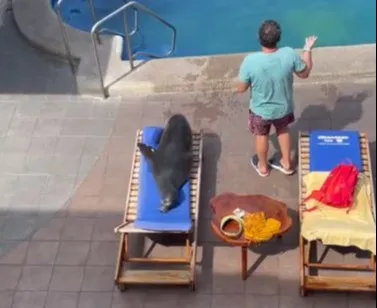Tourists on safari in Kenya got a shock when they spotted a a 15-foot python eating a gazelle in one bite.
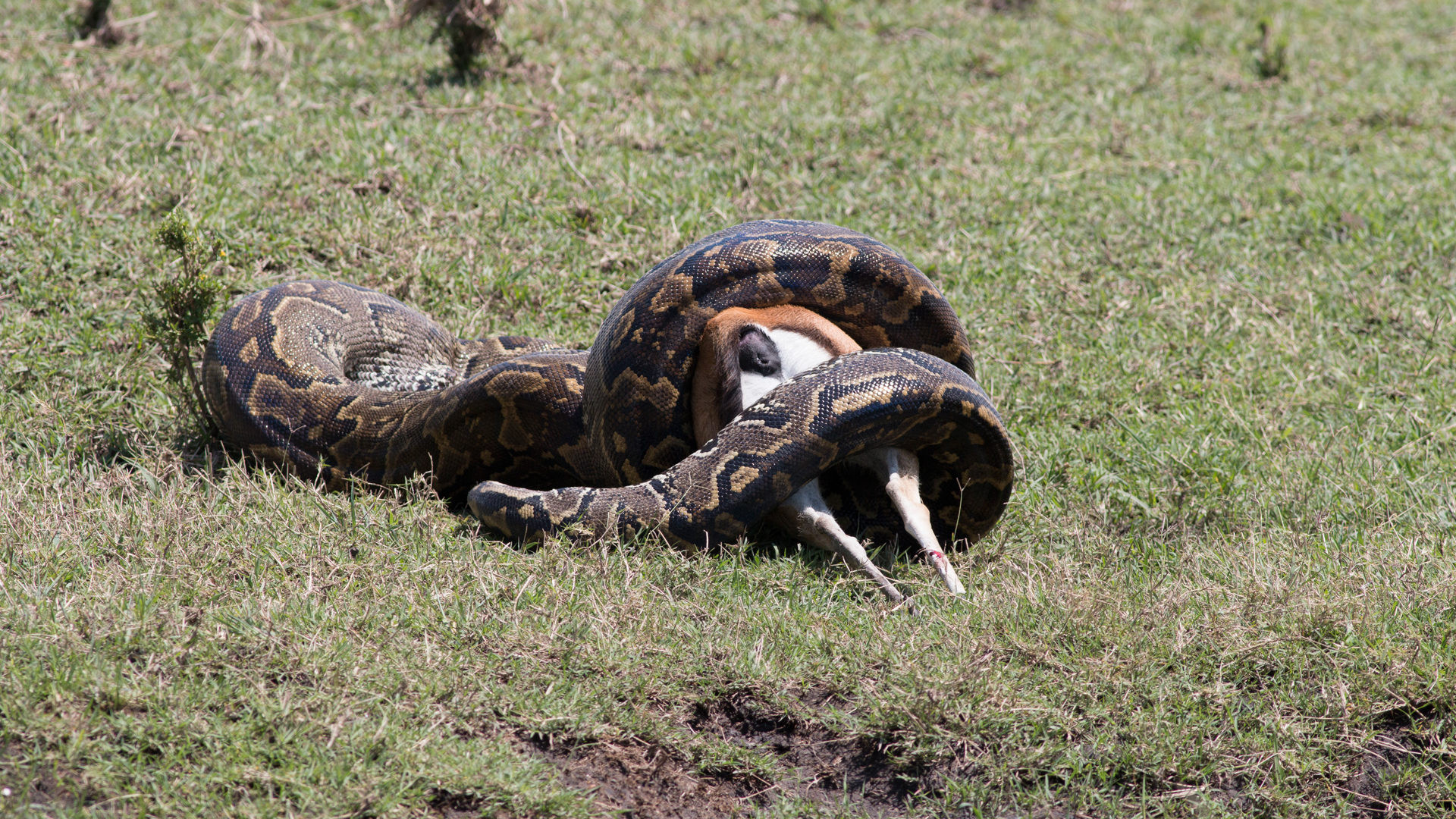
The incredible footage was captured on a game drive in the Masai Mara reserve, popular for sightings of big cats such as lions, leopards and cheetahs – but very rarely snakes. In the video, the huge snake can be seen slowly ingesting the antelope, finishing off with the creature’s legs, before slithering away lethargically into a nearby stream.
Scroll down for video

The snake swells to several times its normal size as the gazelle begins to fill most of its body, while the python’s tail remains curled around the part of the prey not yet eaten. In the video, a local guide can be heard explaining how the snake produces a substance as it eats which softens the animal and allows it to be digested.
The footage was shot by holidaymakers Caron and Mark Steele, from Worcestershire, during a holiday in October.
The couple were traveling with Natural World Safaris – a company specializing in bespoke holidays that allow guests to get up close and personal with some of the world’s most spectacular and elusive wildlife, whilst supporting local conservation projects. Tour guide Andrew Lenkume spotted the scene and pointed it out to the couple.
Video: Python gorges itself on an entire baby Impala antelope
Caron said that the likely scenario is that the gazelle went to the water to drink and the python reared out of the water and clasped its head in its jaw. She added: ‘Using teeth in its jaw to hold on, the snake was probably dragged out of the water as the gazelle backed away trying to escape. The python would then have wrapped its body around the gazelle and squeezed the life out of it.’
The Rock Python is the biggest snake in Africa, but is rarely spotted on game drives due to its ability to camouflage in the surrounding grasses. As they are so slow, the snakes usually eat smaller animals found in trees such as squirrels, or will occasionally drop out of a tree onto a larger creature, rather than attempting to stalk and catch it.
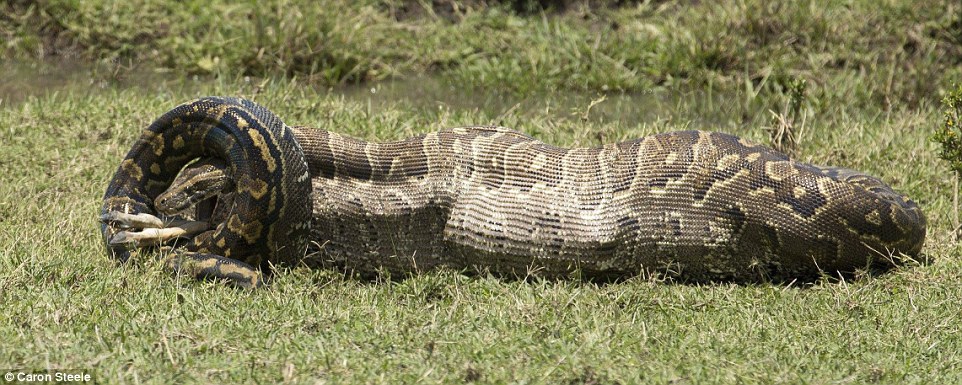
Most antelopes typically give birth in September and October, timed with the coming of the rainy season to increase the chances of the babies’ survival. But the infants are regularly left alone for up to a few hours by their mothers, which more commonly sees them fall prey to hyenas and big cats.
Even so, to witness any kill while on safari is considered extremely fortunate by the local tour guides.
‘With the wonders of nature you are never sure what you may cast your eyes on, and it is not often that you get to witness such an event,’ said Will Bolsover, managing director of Natural World Safaris. ‘To see this in all its glory is a definite once in a lifetime experience.’
Caron and Mark were staying at a nearby luxury site called Richard’s Camp, a private conservancy with very few people which is especially remote and wild.
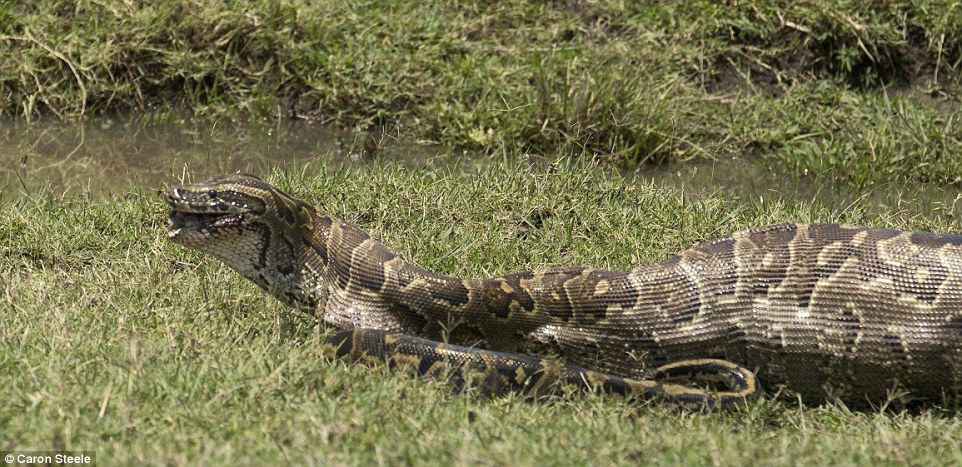
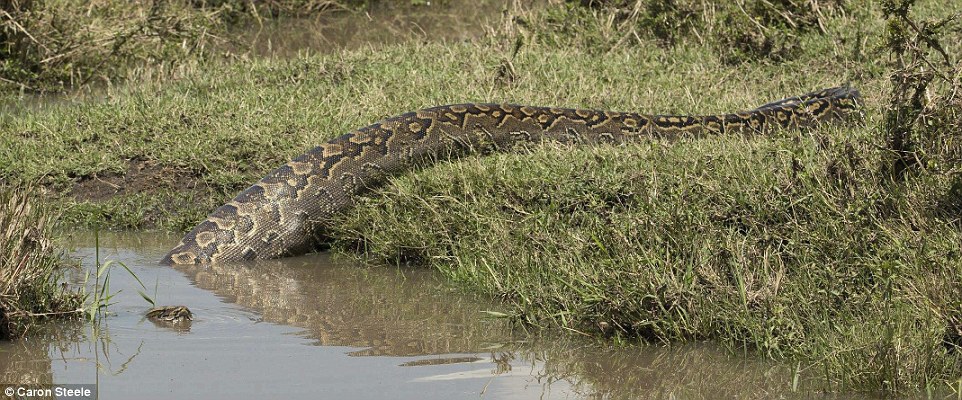
Source: dailymail





